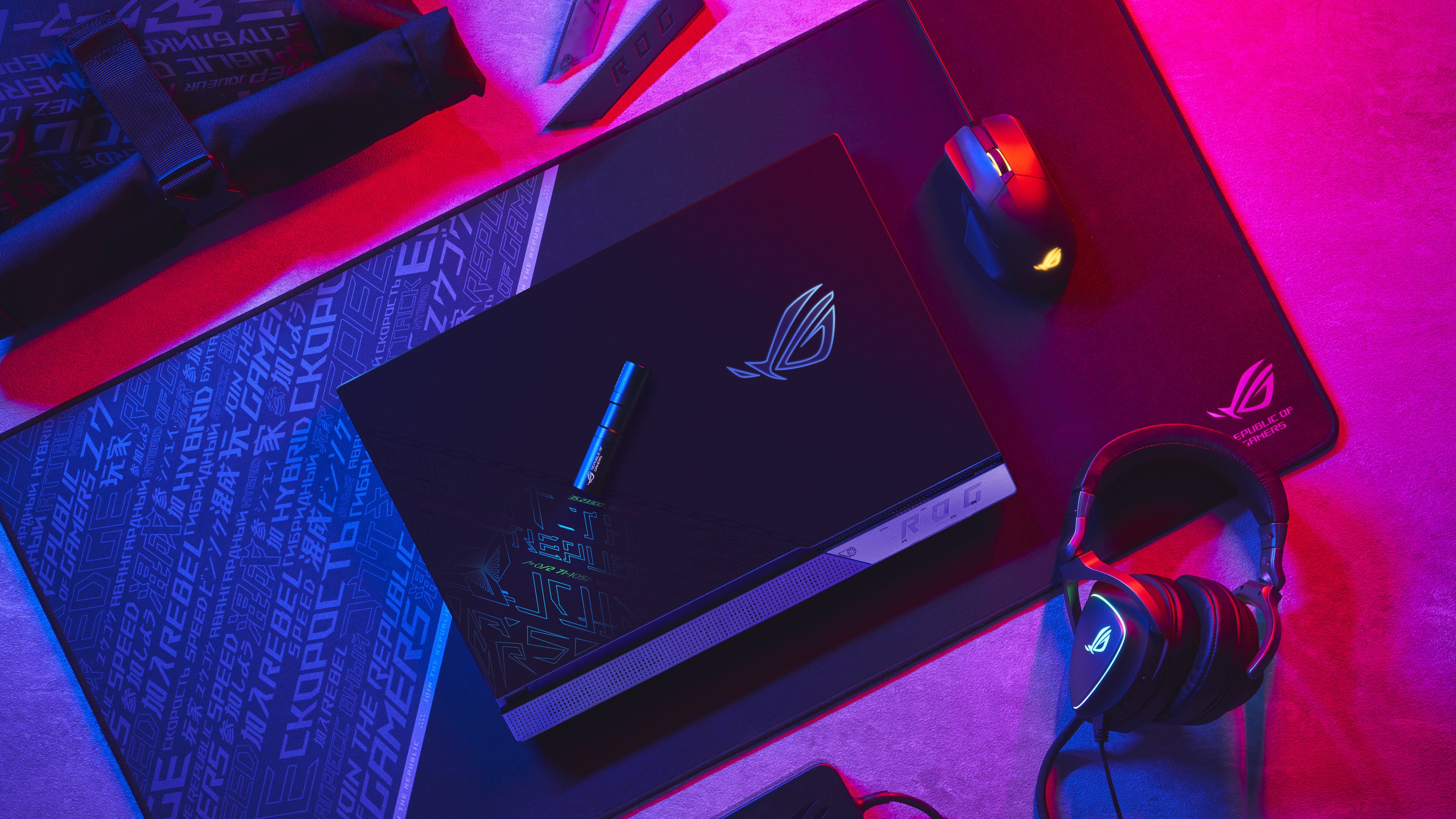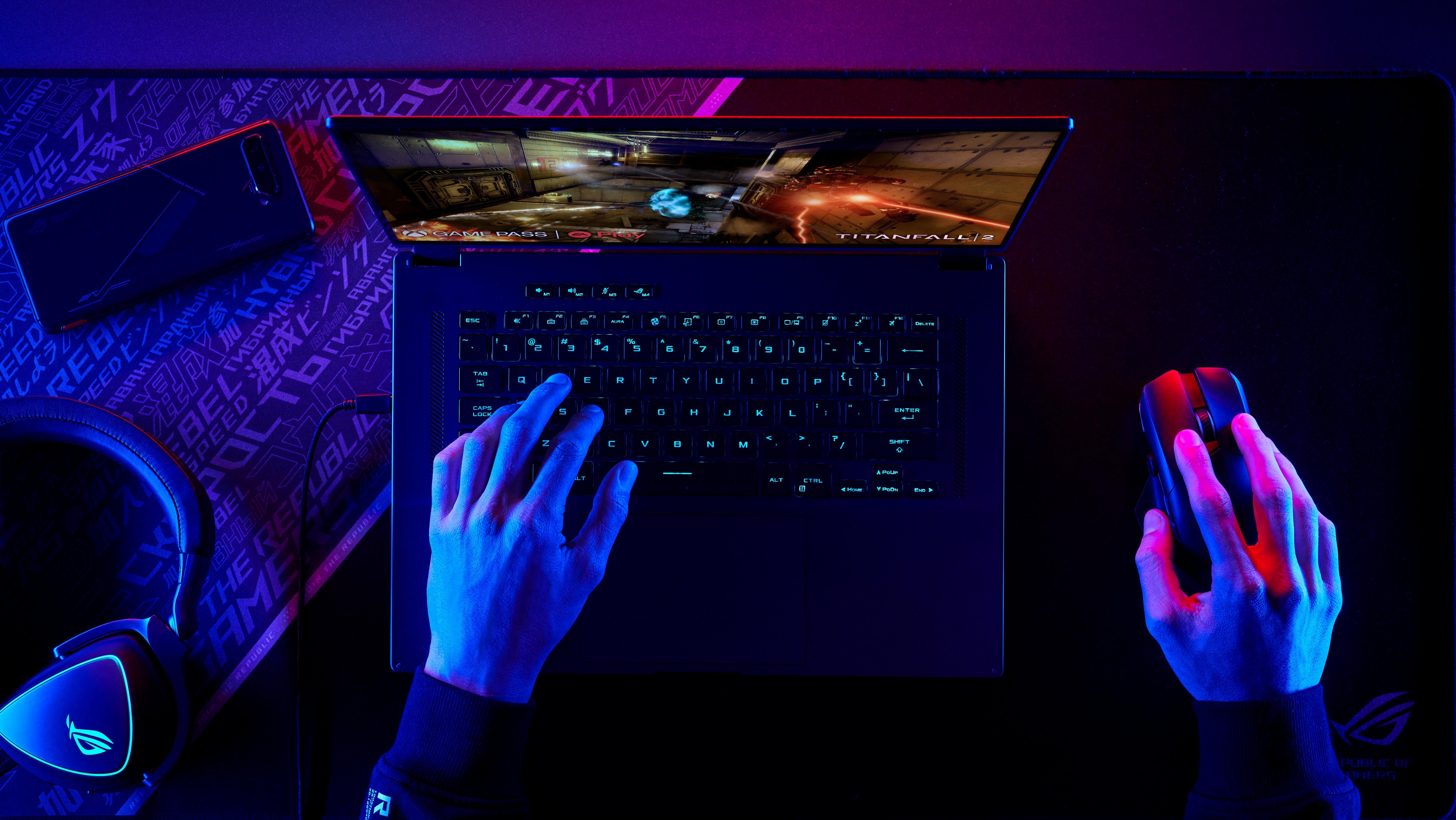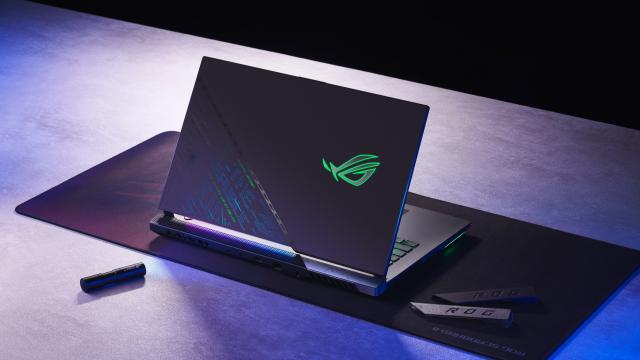ASUS’ new gaming laptop has invisible ink. OK, it’s off my chest. Let me leave that there for a second while I provide some context: after revealing several Zenbook models, the Taiwanese laptop maker is turning to gaming, releasing two new ROG models: the Strix Scar 17 SE and Flow X16.
They’re both very…ASUS, meaning for better or worse, these systems are unlike anything else on the market. Where other bizarre products like the Zenbook 14X OLED Space Edition or Flow ROG Z13 put a childish smirk on my face, the new Strix Scar 17 SE, a powerful 17-inch gaming laptop with compelling specs and features, has me shaking my head in bewilderment.

ROG Strix Scar 17 SE and Flow X16 Release Date and Price
We don’t have details on Australian pricing and availability at this stage (we’ll update this article when we do) but the Strix Scar 17 SE will start at $US3,499 and go up to $US3,699 (converts to around $5,000). The Flow X16 will cost $US1,949 and can be configured for up to $US2,699 (which would be around the $4,000 mark). Simply converting USD to AUD isn’t always helpful, but it’s a good ballpark.
ROG Strix Scar 17 SE
Getting back to my opening, the Strix Scar 17 SE has “specially developed” invisible ink on the lid that becomes more visible when exposed to the included UV flashlight. Shine UV on the Scar and you’ll find cryptic text in a sci-fi-inspired font. If you were hoping the hidden message would help you unlock more gaming performance, I’m afraid it’s just more branding jargon. It doesn’t appear to be a very convincing magic trick, either. While I haven’t seen the Scar 17 SE in person, the images ASUS sent suggest the UV light brightens, rather than reveals the “metallic textured ink.”
In any case, it’s silly and dumb, and I’d much rather have the functional OLED panel from the Space Edition or the fun LED dot matrix from the Zephyrus G14. If this is ASUS simplifying gadgets down to their basic elements, going invisible is perhaps too literal. Of course, that isn’t what ASUS is doing — the Strix Scar 17 SE is visually deafening.
It features a two-tone deck separated by an aggressive slash with ASUS branding shamelessly plastered throughout. An RGB light bar underneath shines rainbow hues on your desk while per-key lighting acts as a fill light for the rest of your room. There are also customisable “Armour Caps” you can pop on to change the look, in a similar way to switching out stock wheel rims for coloured ones.

At 3 kg and 1.1 inches, the Strix Scar 17 SE isn’t the best choice for those who want to game away from their office or “battle station.” For that, I turn you to the Zephyrus G14. With the Scar 17 SE, you at least get a wide array of ports, including a USB 3.1 Type-C input, a Thunderbolt 4 port, two USB-A ports, an RJ45 Ethernet jack, an HDMI 2.1b, and a headphone jack.
Clearly visible is the Strix Scar 17 SE’s performance potential. It comes equipped with 12th Gen Intel Core i9 HX-series CPUs with up to 16 cores and up to a 65W TDP paired with up to an Nvidia GeForce RTX 3080 Ti GPU boosted to a 175W power envelope. You won’t be throttled by the other components, either, as the Scar supports up to 64GB of DDR5 RAM and up to dual 2TB SSDs. ASUS promises the machine will run 15 degrees cooler than the previous model.
Built for competitive gamers, the Scar 17 SE sports the fastest displays, including a 17-inch, 1080p at 360Hz panel or a 1440p (QHD) at 240Hz option. Both IPS panels have a 3-millisecond response time and support Adaptive Sync. We haven’t received any runtime estates, but the 90Wh battery in the Scar will charge from 0% to 50% in just 30 minutes.
ROG Flow X16
The third member of the Flow family, the Flow X16, is a 16-inch convertible gaming laptop that can be paired to ASUS’ proprietary XG Mobile eGPU. It packs an AMD Ryzen 9 6900HS CPU and RTX 3070 Ti GPU paired with up to 64GB of DDR5 RAM and up to a 2TB SSD. It’s enough oomph for all but the most demanding gamers.

With so much power already built in, I wonder why the ROG Flow X16 would even need the ROG XG Mobile. Yes, the eGPU lets you harness the more powerful AMD Radeon 6850M XT or RTX 3080, but the thing is heavy, bulky, and costs $US1,500 ($2,082) — reasons why I can’t imagine ever recommending it to a ROG Flow X16 owner.
Where I can’t find fault is with the display. It’s a 16-inch, 2560 x 1440 (QHD) resolution panel with a 16:10 aspect ratio and up to 1,100 nits. ASUS says the screen covers 100 per cent of the DCI-P3 colour gamut, so expect lively hues. Better yet, the screen has a 165Hz refresh rate, which will make fast-moving videos and games flow smoothly.

At 0.76 inches and 2 kg, the Flow X16 is slightly chunky but relatively lightweight, so it shouldn’t add too much strain on your shoulders when you’re gaming or working from a cafe. Along with the XG Mobile interface with USB Type-C, the Flow has a USB 4.0 Type-C input (for charging), two Type-A ports, an HDMI 2.1, a microSD card slot, and a headphone jack. It has a 90Wh battery that’ll hopefully keep it running through a full day.
